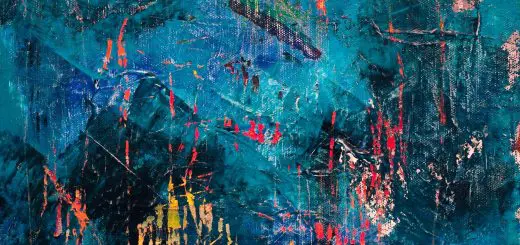Exploring the Afterlife in Ancient Egyptian Mythology

Looking for more amazing products? Check out our online store and explore our collection here! Happy shopping!
Before diving in, please note: This post is for informational purposes only. If you’d like to know more about how we approach topics, feel free to check out our friendly Disclaimer Page.
Hey there, amazing readers! 
We’re committed to delivering quality posts, and your support (even just sticking around despite the ads) means everything to us. So, bear with us, and thanks for helping us keep the good vibes rolling. Now, on to the fun stuff!
TRANSLATE BUTTON AT THE END OF THE ARTICLE
Introduction to Ancient Egyptian Beliefs
Ancient Egyptian beliefs about the afterlife were complex and intricate, shaping every aspect of their society and culture.
The Egyptians held a deep reverence for the cycle of life and death, believing that death was not the end but rather a transition to another realm.
Their spiritual beliefs were centered around the concept of Ma’at, the cosmic order that governed the universe.
This belief system influenced their views on morality, ethics, and the afterlife.
The Egyptians believed in an eternal life after death, where the soul would journey to the realm of the dead and be judged based on their deeds in life.
Concept of the Afterlife in Ancient Egypt
In ancient Egyptian mythology, the afterlife was a vibrant and dynamic realm where the soul embarked on a journey of transformation and rebirth.
The Egyptians believed that the soul consisted of several parts, including the Ka (life force), Ba (personality), Akh (spirit), and Ren (name).
Upon death, these different aspects of the soul would separate, with the Ka remaining close to the body and the Ba journeying towards the afterlife.
The ultimate goal of this journey was to reach the Field of Reeds, a paradise-like realm where the soul could live in eternal bliss.
Journey of the Soul in Egyptian Mythology
The journey of the soul in Egyptian mythology was filled with challenges and obstacles that the deceased had to overcome to reach the afterlife successfully.
The soul had to navigate through the Duat, the realm of the dead, where it encountered various dangers and trials.
The deceased had to pass through gates, overcome demons, and recite spells from the Book of the Dead to reach the Hall of Judgment.
Here, the soul would stand before Osiris, the god of the afterlife, and undergo a process of judgment to determine its fate.
Preparation for the Afterlife
Preparation for the afterlife was a crucial aspect of ancient Egyptian funerary practices.
The Egyptians believed that the deceased needed a proper burial and funerary rites to ensure a successful journey to the afterlife.
This involved mummification, the preservation of the body through a meticulous process of embalming and wrapping in linen bandages.
The deceased’s personal belongings, food, and other offerings were also placed in the tomb to accompany them on their journey.
The tomb itself was filled with protective amulets and spells to aid the deceased in the afterlife.
Ma’at and Judgment of the Dead
Ma’at, the concept of cosmic order and balance, underpinned the judgment of the dead in ancient Egyptian mythology.
The heart of the deceased was weighed against the feather of Ma’at in the Hall of Judgment.
If the heart was found to be lighter than the feather, the soul would be deemed pure and just and allowed to continue its journey to the afterlife.
However, if the heart was heavy with sin and wrongdoing, it would be devoured by the demon Ammit, and the soul would be condemned to eternal punishment.
Osiris and the Realm of the Dead
Osiris, the god of the afterlife, played a central role in ancient Egyptian beliefs about the afterlife.
He was the ruler of the realm of the dead and presided over the judgment of the deceased in the Hall of Judgment.
Osiris was also associated with the cycle of death and rebirth, symbolizing the eternal renewal of life.
The Egyptians believed that by aligning themselves with Osiris and following his teachings, they could ensure a successful journey to the afterlife and eternal life in the Field of Reeds.
Book of the Dead: Guide to the Afterlife
The Book of the Dead, a collection of funerary texts and spells, served as a guidebook for the deceased on their journey through the afterlife.
The spells were designed to help the soul navigate the dangers of the Duat, overcome obstacles, and pass the judgment of Osiris successfully.
The Book of the Dead was often inscribed on papyrus scrolls and buried with the deceased to provide them with the knowledge and protection they needed in the afterlife.
It was believed that reciting the spells correctly would ensure a smooth journey to the Field of Reeds.
Rituals and Burial Practices
Ancient Egyptian burial practices were elaborate and ritualistic, reflecting their beliefs about the afterlife.
The process of mummification was a central part of the funerary ritual, with the body being preserved to ensure the soul’s continued existence.
The deceased’s organs were removed, dried, and placed in canopic jars, while the body was embalmed and wrapped in linen bandages.
Funerary rites, including prayers, incantations, and offerings, were performed to ensure the deceased’s safe passage to the afterlife.
The tomb itself was filled with treasures, food, and other items to sustain the deceased in the afterlife.
Symbolism in Egyptian Funerary Art
Funerary art in ancient Egypt was rich in symbolism and meaning, reflecting the Egyptians’ beliefs about the afterlife.
Tombs and burial chambers were decorated with intricate paintings, hieroglyphs, and reliefs that depicted scenes from the deceased’s journey through the afterlife.
Symbolism such as the Eye of Horus, the Ankh, and the scarab beetle were commonly used to represent protection, life, and rebirth.
These symbols were believed to have magical properties and could provide the deceased with guidance and assistance in the afterlife.
Tombs and Pyramids: Eternal Resting Places
Tombs and pyramids served as the eternal resting places for the deceased in ancient Egypt.
The pyramids, such as the famous Pyramids of Giza, were monumental structures built as royal tombs for the pharaohs.
These massive edifices were designed to house the pharaoh’s mummified body, along with treasures, possessions, and offerings for the afterlife.
The layout and construction of the pyramids were carefully planned to ensure the pharaoh’s safe passage to the realm of the dead.
Tombs, both simple and elaborate, were also constructed for nobles, priests, and other members of society to ensure their journey to the afterlife.
Interactions with Deities in the Afterlife
In ancient Egyptian mythology, the deceased had the opportunity to interact with various deities in the afterlife.
The deceased could invoke the help of gods and goddesses such as Anubis, Thoth, and Hathor to guide them through the Duat and protect them from harm.
These deities played specific roles in the journey of the soul, assisting the deceased in different aspects of their afterlife journey.
Priests and funerary workers often performed rituals and offerings to honor these deities and ensure their favor in the afterlife.
Legacy of Egyptian Afterlife Beliefs
The legacy of ancient Egyptian afterlife beliefs continues to influence modern culture and thought.
The intricate mythology, rituals, and practices surrounding death and the afterlife have inspired countless works of art, literature, and film.
The concept of an eternal life after death, judgment of the soul, and the journey to the afterlife remains a powerful and enduring theme in human spirituality.
The rich tapestry of Egyptian beliefs about the afterlife serves as a testament to the enduring fascination with the mysteries of death and what lies beyond.
Conclusion
Ancient Egyptian beliefs about the afterlife were deeply rooted in their complex mythology and cultural practices.
The concept of Ma’at, the journey of the soul, rituals, and interactions with deities all played a crucial role in shaping their views on life, death, and the afterlife.
Through meticulous preparation, burial practices, and adherence to the teachings of Osiris and the Book of the Dead, the Egyptians believed they could ensure a successful journey to the eternal realm of the dead.
The legacy of their beliefs continues to captivate and inspire us today, reminding us of the enduring quest for immortality and the mysteries of what awaits us beyond this life.

The Enlightenment Journey is a remarkable collection of writings authored by a distinguished group of experts in the fields of spirituality, new age, and esoteric knowledge.
This anthology features a diverse assembly of well-experienced authors who bring their profound insights and credible perspectives to the forefront.
Each contributor possesses a wealth of knowledge and wisdom, making them authorities in their respective domains.
Together, they offer readers a transformative journey into the realms of spiritual growth, self-discovery, and esoteric enlightenment.
The Enlightenment Journey is a testament to the collective expertise of these luminaries, providing readers with a rich tapestry of ideas and information to illuminate their spiritual path.
Our Diverse Expertise
While our primary focus is on spirituality and esotericism, we are equally passionate about exploring a wide range of other topics and niches 

To ensure we provide the most accurate and valuable insights, we collaborate with trusted experts in their respective domains 
Our blog originally focused on spirituality and metaphysics, but we’ve since expanded to cover a wide range of niches. Don’t worry—we continue to publish a lot of articles on spirituality! Frequently visit our blog to explore our diverse content and stay tuned for more insightful reads.
Hey there, amazing reader! 
Check out our store here and take a peek at some of our featured products below! Thanks for being awesome!











